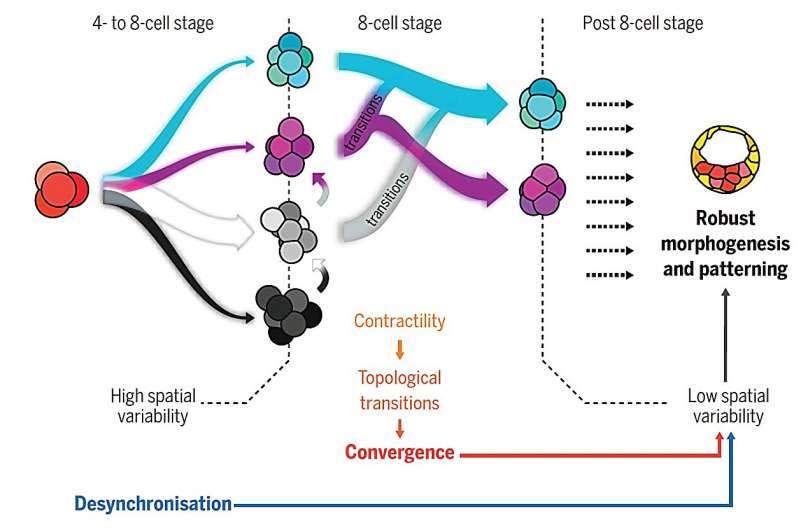Explore the fascinating journey of how a seemingly disorganized collection of cells transforms into a robust and organized embryo. Discover how morphogenesis, the process of an organism developing its shape and structure, is governed by a delicate balance between chaos and order. Gain insights into the cutting-edge research that is shedding light on this fundamental biological process.

Embracing Chaos: The Key to Embryonic Harmony
In the world of science, researchers often find themselves immersed in the routine tasks of pipetting liquids, analyzing datasets, and poring over research publications. However, it is during moments of creative exploration that true breakthroughs occur.
This was the case for Bernat Corominas-Murtra and Edouard Hannezo from the Institute of Science and Technology Austria (ISTA), who were captivated by a dataset showcased during a collaborative retreat in Spain. Collaborating with Dimitri Fabrèges, a postdoc from the Hubrecht Institute in the Netherlands, the international team of researchers set out to unravel the mysteries of early mammalian embryonic development.
Their findings, published in the prestigious journal Science, reveal a surprising insight: while individual events like cell division and movement appear chaotic, the embryos as a whole converge towards a highly reproducible and organized structure.
Tracing the Embryo’s Journey: From Chaos to Structure
Embryonic development begins with the fertilization of an egg cell, triggering a series of consecutive cell divisions known as cleavages. These early stages are crucial, as they set the stage for all subsequent developmental processes.
In some model organisms, like the C. elegans roundworm, the early cell divisions are highly regulated and oriented, resulting in organisms with a consistent number of cells. However, in mammalian species, the divisions appear much more random, both in timing and orientation.
To understand this apparent disorder, the research team, led by Professor Takashi Hiiragi, set out to create a comprehensive ‘morphomap’ – a detailed atlas of early mammalian embryonic development. By analyzing the developmental process across mice, rabbits, and monkeys, they were able to quantify the similarities and differences within and between species, revealing a surprising pattern.
Solving the Embryo’s Rubik’s Cube: Uncovering the Physics Behind Development
The data gathered by the research team showed that the initial cell divisions after fertilization were highly chaotic and unregulated across different mammalian species. However, as the embryo developed, the cells suddenly began to converge towards a shared, organized structure by the eight-cell stage.
This intrigued Corominas-Murtra and Hannezo, who approached the problem from a theoretical physics perspective. They discovered that the key to understanding this process lies in the configurations of the cell-to-cell contacts, rather than the full complexity of the embryo’s shape.
By creating a simple physical model, the researchers were able to demonstrate how physical laws drive embryos to form a specific morphology shared among mammals. Through a process of destabilizing most cell arrangements, except for a few selective ones that lower the surface energy of the embryo, the cells are guided towards the most optimal packing, like a Rubik’s cube solving itself.
